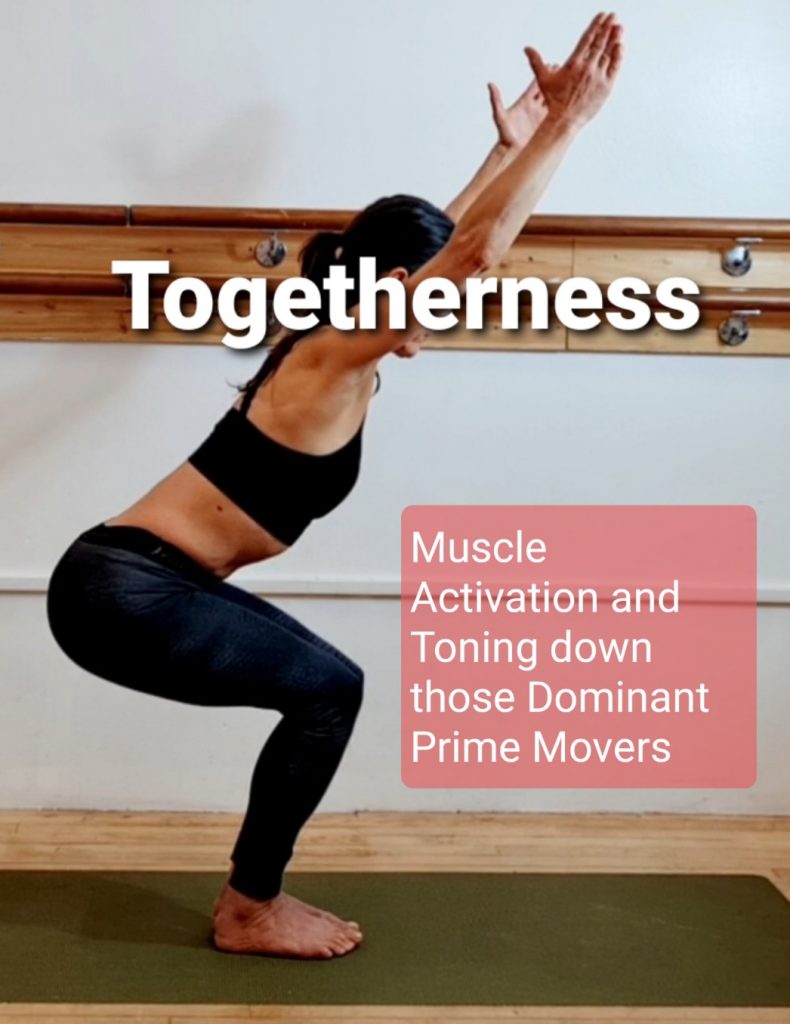
Yoga practice aims to bring muscles working in harmony with each other where no single muscles is too dominant or weak. Bringing this balance protects us from future pain and injury.
Yoga poses take our limbs and bodies into planes of movement that are often neglected in our daily lives, where movements tend to centre around bringing the arms before us and taking our backs into flexion (forward bending). Yoga poses take our spines into side and backbends and works to bring life to the often neglected shoulder and hip stabilisers – three areas that are prone to injury and ‘wear and tear’. This makes yoga a real workout and not simply a flexibility challenge as is a common perception.
A pose such as chair pose (Utkatasana) is hard work! It is a good example of a pose that should not just be attempted straight away because – unless you train your rear shoulders – they will not have the strength to maintain the arms at the ears and the result will be a rounded upper back or overactive upper neck muscles (trapezius) where the shoulders will be held way up towards the ears. It will feel very difficult to ultimately feel relaxed in this pose, as is the goal in the final stage of a yoga pose.
Before attempting this version of chair pose, you would need to spend some time strengthening the rear shoulders, gain the strength and confidence to sit back in this type of squat so that all the muscles that hold the knee and hip flexion are working together. The abdominals need to be strong enough to control the rate at which you take the back into this mini backbend.
The problem with trying to work the rear shoulders for most people is that the upper trapezius (neck muscles) will simply take over while the rear shoulders will remain inactive. The upper trapezius are the muscles which are working when we shrug, when we anticipate pain or pleasure and when we simply try too hard. They are the muscles that end up feeling sore and tight at the base of the neck, spreading out to the shoulders. This will certainly be the case if you try to hold this pose for eight breaths without the support of all the muscles that stabilise the shoulder.
There are methods and drills to activate the rear shoulders before the upper trapezius dominates and this involves, as always with yoga, being willing to start with these before jumping straight in to what it appears is happening in the pose.
